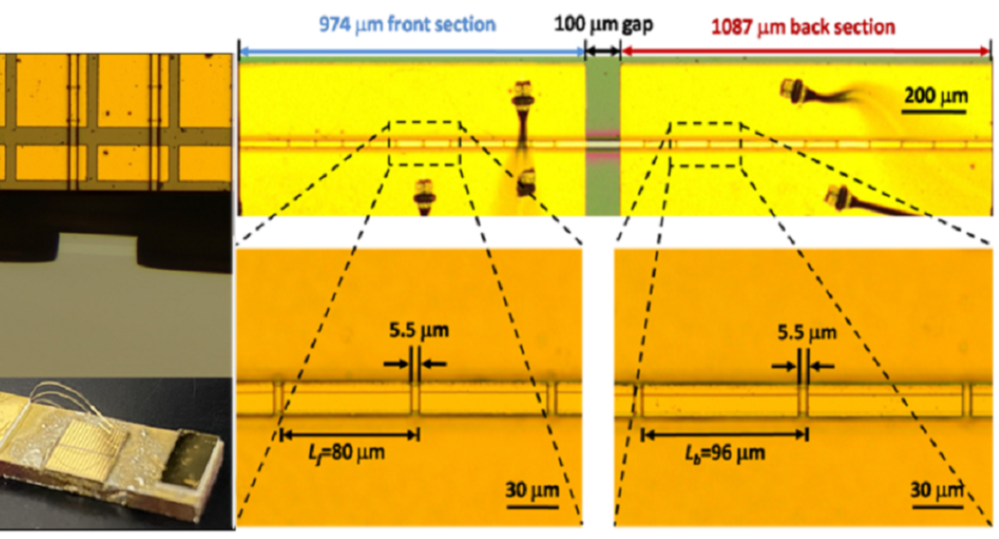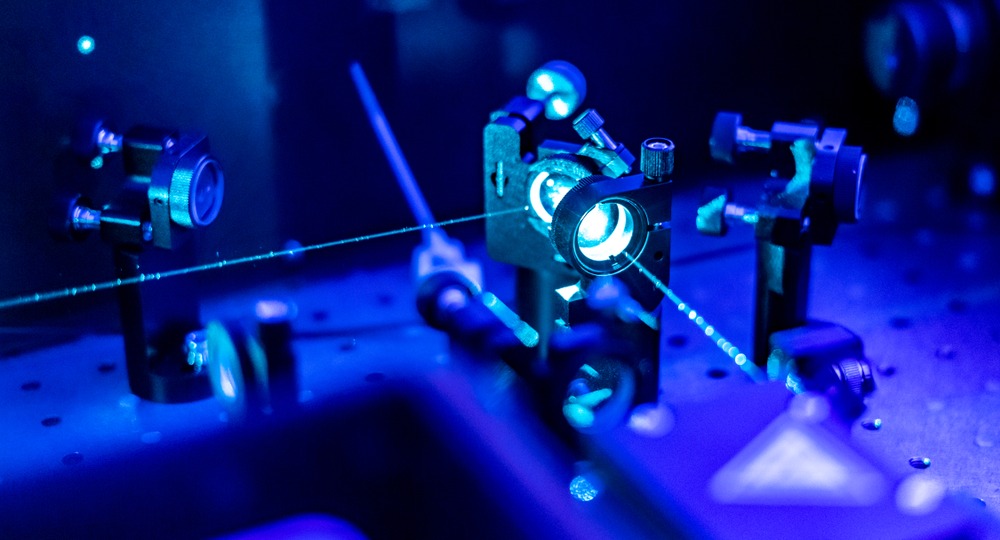Highly Sensitive, Multiplex, Spectroscopic - Portable Gas Sensing System
KEY INFORMATION
Environment, Clean Air & Water - Sensor, Network, Monitoring & Quality Control Systems
TECHNOLOGY OVERVIEW
In the mid-infrared region, gases exhibit absorption spectral features that are typically two orders of magnitude stronger compared to the near-infrared region. This makes the mid-infrared quantum cascade laser (QCL) a highly suitable choice for gas spectroscopy applications. QCLs offer several advantages, including broadband spectral coverage ranging from 3 to 25μm, narrow linewidth, compact size, and robustness, which have contributed to their popularity in various spectroscopic applications.
In this context, a portable gas sensor has been developed utilizing self-developed QCL arrays, covering two specific wavelength regimes: 9-10 μm and 13-14 μm. To further enhance the detection sensitivity, an artificial intelligence (AI) algorithm has been integrated into the gas sensor. The incorporation of a hollow-core fiber as a miniaturized gas cell contributes to the overall compactness of the system. By leveraging the capabilities of QCLs, this gas sensor overcomes critical weaknesses associated with existing approaches, particularly their lack of selectivity and inability to differentiate mixtures of gases effectively. We anticipate that this technological innovation will accelerate scientific research progress and prove valuable across various industry sectors.
TECHNOLOGY FEATURES & SPECIFICATIONS
The innovation of this portable gas sensor is mainly in the laser source and beam combining approach. Compared with the commercial QCL products, the developed QCL arrays exhibited wide spectra tuning range, ultra-fast tuning speed, narrow linewidth, and eye-safe average power. To combine the laser beams in the array, a cost-efficient beam combining method has been developed. This method utilizes an aspherical lens and a series of mini mirrors to collimate the individual beams from the laser array. The system is controlled by a LabVIEW program, which simplifies its operation. After conducting measurements, the AI algorithm automatically calculates the concentration of the target gases. This information is then displayed on the software interface, providing a convenient and user-friendly experience.
The gas cell in the sensor employs a hollow-core fiber, which results in a quick analyte charging time of less than 1 minute. Furthermore, the gas sensor utilizes a broadband laser source, enabling simultaneous detection of multiple gases. The performance of the homemade QCL array is notable in terms of lasing peak and transverse mode, making it well-suited as the light source in gas spectroscopic systems.
Notably, the gas sensor extends the operation wavelength regime into the ~13-14 μm region, which is advantageous for detecting volatile organic compounds (VOCs) that have strong absorption features in this range. In terms of detection limits, the gas sensor has been evaluated to achieve 940 parts per billion (ppb) for acetylene and 470 ppb for o-xylene.
POTENTIAL APPLICATIONS
Primary application areas: scientific research, environmental monitoring, and industrial process control.
Other areas: Indoor air quality monitoring and oil & gas.
The potential products: Mid-infrared photoacoustic gas sensor, QCL-based dual-comb gas sensor, Cavity ring-down gas sensor and liquid sensors.
Market Trends & Opportunities
The global gas sensor market size was valued at USD 2.50 billion in 2021 and is expected to expand at a compound annual growth rate (CAGR) of 8.9% from 2022 to 2030. In this context, the QCL plays a pivotal role as one of the primary light sources in mid-infrared gas spectroscopy applications. Consequently, the QCL-based gas sensor has promising potential in the gas sensor market size.
Unique Value Proposition
This technology is portable and provides both high selectivity and sensitivity with key benefit lies in three domains:
- Gas Sensing: this solution enables precise and accurate gas sensing, allowing for the detection and differentiation of multiple trace gases in various environments.
- Spectroscopy / Instrumentation: With the capability to design and create long-wavelength quantum cascade lasers, our technology is well-suited for advanced spectroscopy and instrumentation applications.
- IoT (Internet of Things) for Smart-Nation: By integrating this technology into the Internet of Things framework, contribute to building smarter and more efficient nations with improved environmental monitoring and management.
The most critical problem of the existing technologies, such as electronic and chemical sensors, lies in their lack of selectivity. This means they are unable to distinguish between multiple trace gases unless more advanced methods like GC-MS or FTIR technology are employed. Unfortunately, these advanced methods are both bulky and expensive, restricting their usage to laboratory environments only.



